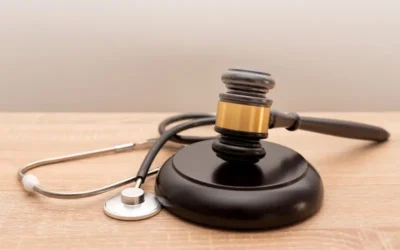Personal injury cases that involve medical chart reviews are filed to recover damages for medical expenses. The plaintiff is required to produce evidence and prove that the medical expenses incurred were reasonable and necessary. A plaintiff can recover the “reasonable value” of the medical services incurred provided they prove that he/she had necessarily incurred the medical expenses due to injuries resulting from the defendant’s negligent action, he/she has paid or become liable to pay the medical bills, and that the charges were reasonable for services of that nature. The Collateral Source Rule is a very important regulation that applies to personal injury cases.
What is the Collateral Source Rule?
The collateral source rule implies that any compensation that an injured person (the plaintiff) may have received from a source other than the entity that is legally responsible for the injuries (i.e. the defendant) will not reduce the amount of damages recoverable from the defendant. This rule comes into play most often in cases where the plaintiff’s insurance paid for the medical treatment received for the injuries. The collateral source rule holds that the injured person can receive compensation from the insurance company as well as the defendant. Apart from insurance, collateral sources include Social Security, Medicaid, Medicare, Workers’ Compensation and so on. The Collateral Source Rule also prohibits jury members from taking into account any payments other than payments from the negligent party, and that includes the plaintiff’s insurance coverage.
What is the rationale for this regulation?
- It would not be fair to reduce the damages due to a plaintiff because he/she has paid insurance premiums for a number of years.
- It is not right to aid the defendant who is a tortfeasor.
- Often, the plaintiff has to pay for the benefits received from a third party such as an insurance company out of the damages award. This is known as subrogation.
Defendants argue that the medical bills are not reasonable because they were either reduced or written off by the payer, who accepted insurance payments. Therefore the injured party’s reasonable medical expenses and damages should be limited to sums “actually paid” by the insurer and proof of the full medical charges billed (written off or paid by insurer) should be excluded. With such arguments, proving the reasonable value of medical services has become quite difficult.
Calculation of what is the “reasonable value” of medical services has become complex and distorted due to various reasons.
- Heavy discounts demanded by payers
- Benefit programs such as Medicaid and Medicare that pay a fixed amount for all medical treatments the patient receives
- Laws that require hospitals to treat patients who cannot pay
As a result, there is an increasing gap between hospitals’ standard rates for uninsured patients and the discounted amounts hospitals accept from insurance companies. At present, there are numerous and diverse collateral sources available to plaintiffs such as free treatment at veterans’ facilities, benefits from unions, employment benefits offered by the employer, workers’ compensation, occupational accidental plans and policies, pensions and so on.
Apart from these issues, the pricing and reimbursement system for healthcare providers also has become much more complex. Though MCOs (Managed Care Organizations) were introduced to control healthcare costs, patients no longer have the freedom to choose among doctors and hospitals. Moreover, MCOs demanded heavy discounts and providers balanced this by charging higher prices to other patients.
Since it has become difficult to evaluate what is “reasonable” medical expense, there is increased litigation in this regard. Let us see how states approach this issue and decide how much of a medical expense can be introduced into evidence and how much can be recovered.
- Amount billed: This approach gives the plaintiff the “benefit of the bargain” for having purchased the insurance. It allows full recovery – undiscounted medical bills including any write-off amounts only where the plaintiff paid consideration for the insurance benefits. Courts that follow this approach don’t allow plaintiffs who did not pay for the benefit of discounted rates and write-offs to recover the complete bill amount. This rule applies in Arizona, Colorado, Delaware, District of Columbia, Georgia, Hawaii, Illinois, Kentucky, Louisiana, Massachusetts, Mississippi, Oregon, South Carolina, South Dakota, Virginia, and Wisconsin.
- Amount paid: This approach limits the amount a plaintiff can recover to the amount paid to the medical provider, either by insurance or by other source. This prevents plaintiffs from securing any “windfall” from tortfeasors, i.e. defendants. States that follow this approach claim that limiting the plaintiff’s recovery to the amount paid to the healthcare provider is not against the Collateral Source Rule because the rule is not implicated. Moreover, limiting the recovery amount will help the liability insurance industry as well as the state’s business economy. The plaintiff can recover only what he/she has spent. Examples of states whose courts have held that only the evidence of the amount paid is relevant and admissible are Idaho, California, and Pennsylvania. Minnesota, Florida, and New York apply the Collateral Source Rule, and require a post-verdict reduction of the difference between the amount billed and the amount paid.
- Reasonable value: Irrespective of whether the plaintiff is privately insured, he/she may recover the “reasonable value” of their medical expenses. The definition of “reasonable value” varies with different state courts. A minority define this as the actual amount paid whereas the majority holds that it can be the plaintiff’s full, undiscounted medical bills. A few courts also adopt a hybrid method and allow the jury to take into account both the actual amount paid and the full bill in determining the “reasonable value,” and Kansas, Indiana, Iowa, and Ohio are examples of such states.
The Collateral Source Rule has become a solidly established principle of tort law in most U.S. states. However, questions such as the following remain.
- Does the law apply to free medical services?
- Is a plaintiff allowed to submit to the jury the amount billed initially for medical services, against a discounted amount that his/her private insurer paid to their healthcare provider?
- Does the law apply to services covered by Medicare or Medicaid?
- Can the defendant produce evidence of the discounted amount actually paid?
- What are the basic and appropriate requirements to introduce an unpaid medical bill?
- Can the trial court reduce the plaintiff’s damages award to the amount actually paid by a collateral source?
There have been state-level reforms of the Collateral Source Rule.
- In California, collateral source evidence is admissible when the case is against a healthcare provider for medical malpractice or professional negligence. The provider can introduce evidence of amounts payable to the injured person by payers and other sources. When the defendant introduces such evidence, the plaintiff can also introduce evidence of payments made to secure the right of insurance benefits. This reform is similar to rules in place in other states.
- The state of Florida prohibits the introduction of evidence of insurance benefits paid to the injured person in this regard. Florida has an exception nevertheless for federal benefits. A defendant in a personal injury case can inform the jury of Medicare/Medicaid benefits received by the injured person. In cases where an insurance company has a right to reimbursement, Florida reduces the amount awarded to the plaintiff for medical expenses or lost wages. According to this, only part of an injured person’s medical expenses were covered by the insurance company and the other medical expenses were written off. The injured person is required to reimburse the payer out of the final judgment in the lawsuit.
Personal injury attorneys and their supporting entities such as providers of medical review services focus on establishing the injury and justifying how the medical expenses are reasonable. For this, a comprehensive understanding of how medical expenses are proven and recovered is absolutely necessary.




